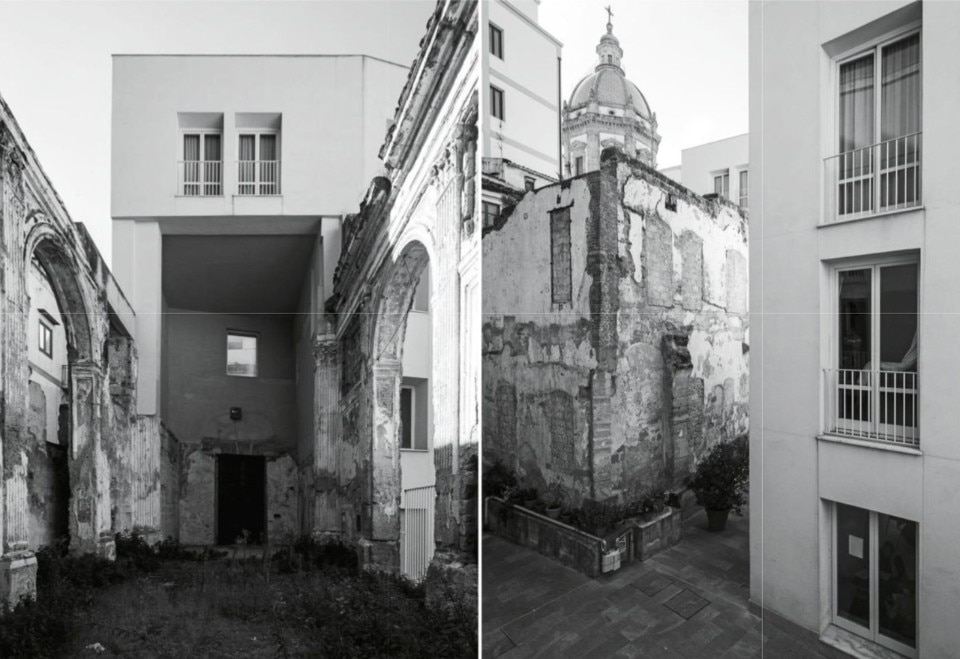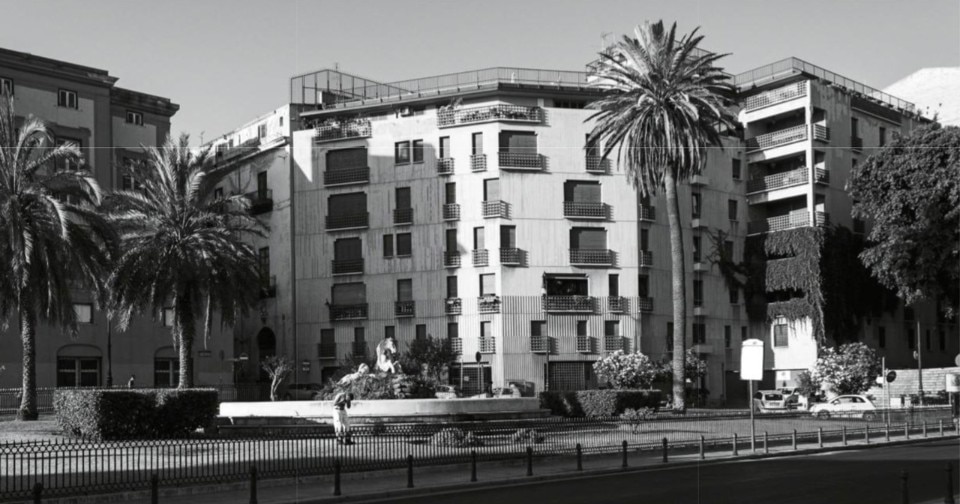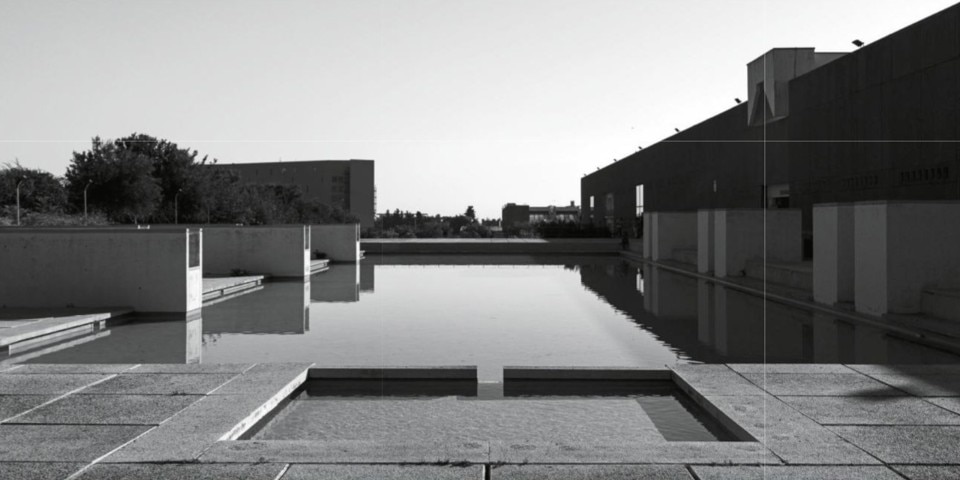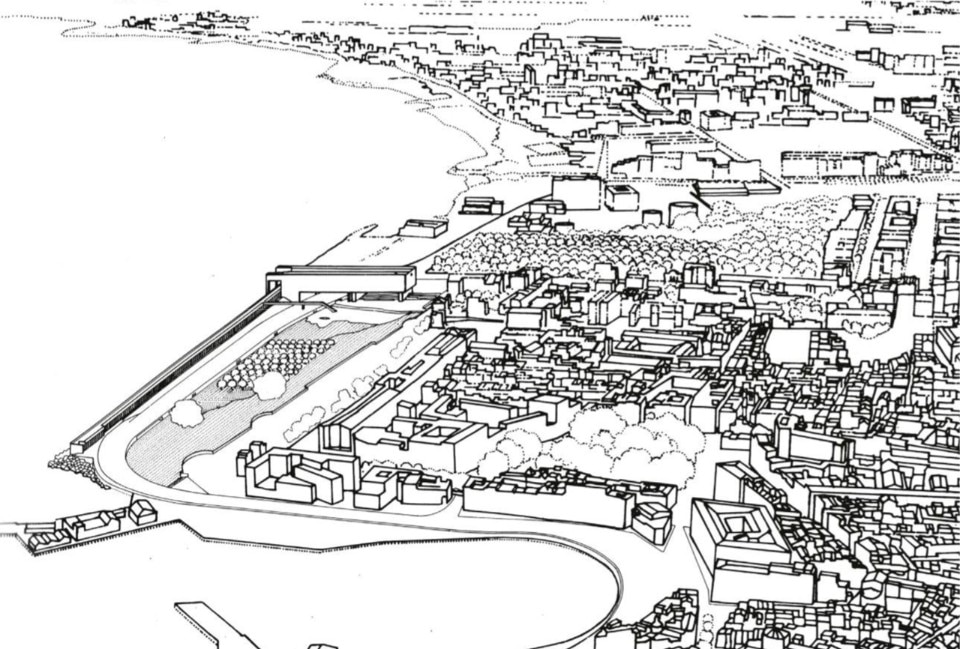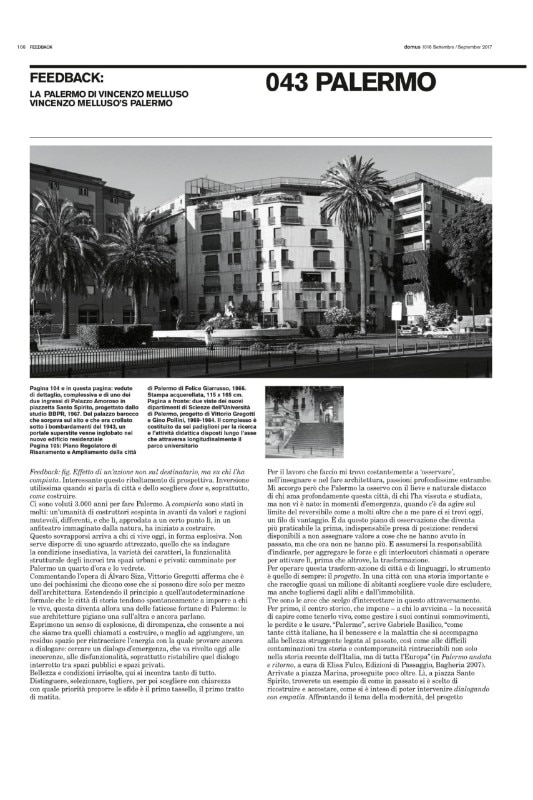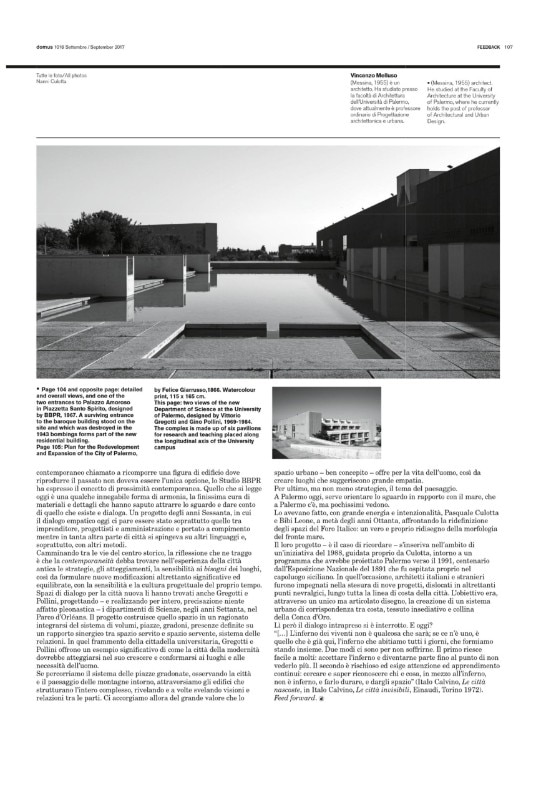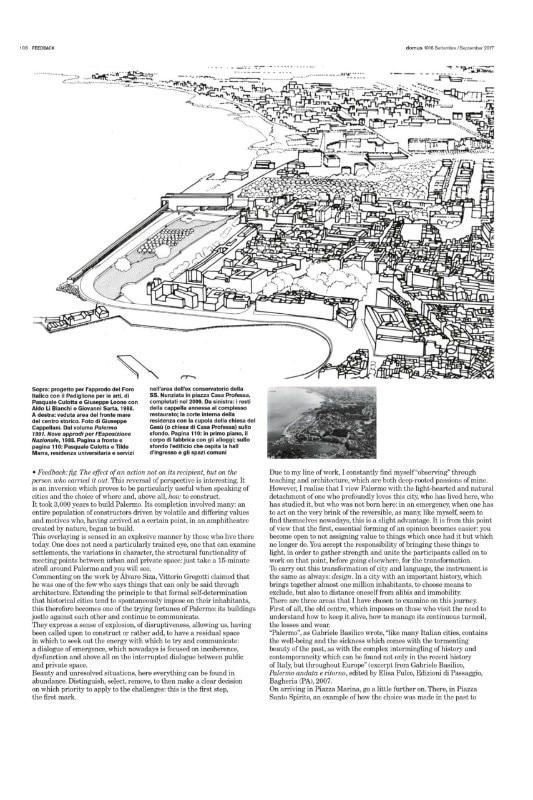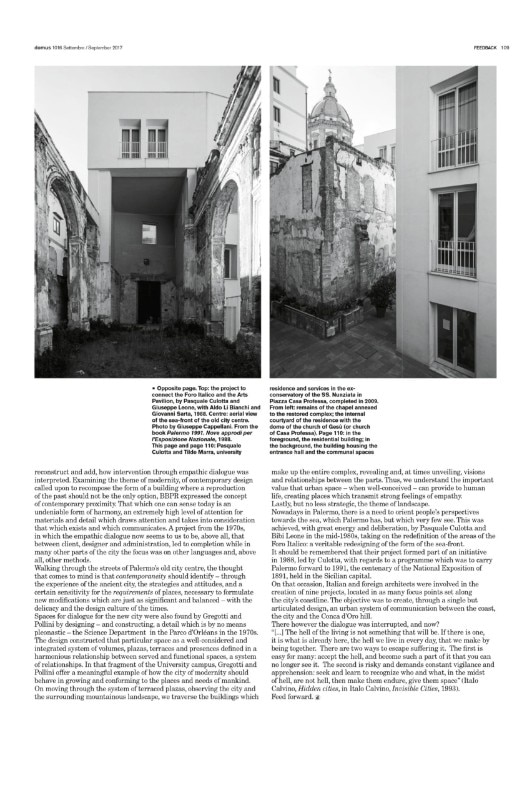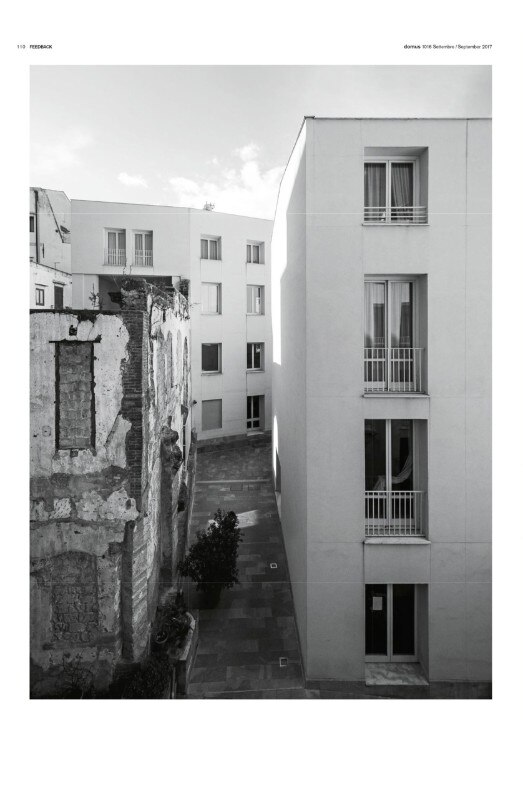[...] It took 3,000 years to build Palermo. Its completion involved many: an entire population of constructors driven by volatile and differing values and motives who, having arrived at a certain point, in an amphitheatre created by nature, began to build. This overlaying is sensed in an explosive manner by those who live there today. One does not need a particularly trained eye, one that can examine settlements, the variation in character, the structural functionality of meeting points between urban and private space: just take a 15-minutes stroll around Palermo and you will see. […]
Its building jostle against each other and continue to communicate. They express a sense of explosion, of disruptiveness, allowing us, having been called upon to construct or rather add, to have a residual space, in which to seek out the energy with which to try and communicate: a dialogue of emergence, which nowadays is focused on incoherence, dysfunction and above all on the interrupted dialogue between public and private space. Beauty and unresolved situations, here everything can be found in abundance.
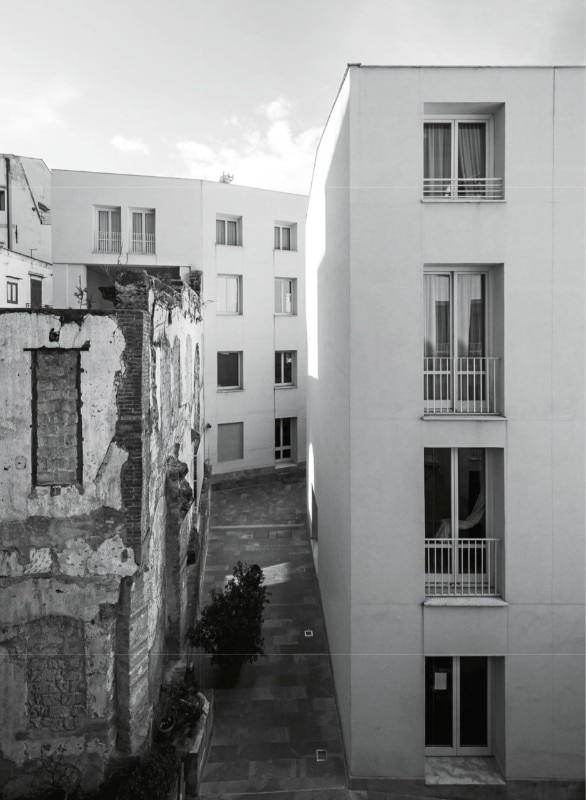
 View gallery
View gallery
Distinguish, select, remove, to then make a clear decision on which priority to apply to the challenges: this in the first step, the first mark. Due to my line of work, I constantly find myself “observing” through teaching and architecture, which are both deep-rooted passions of mine. However, I realise that I view Palermo with the light-hearted and natural detachment of one who profoundly loves this city, who has lived there, who has studied it, but who was not born here: in an emergency, when one has to act on the very brick of the reversible, as many, like myself, seem to find themselves nowadays, this is a slight advantage. It is from this point of view that the first, essential forming of an opinion becomes easier: you become open to not assigning value to things which once had it but which no longer do. You accept the responsibility of bringing these things to light, in order to gather strength and unite the participants called on to work on that point, before going elsewhere, for the transformation. To carry out this transformation of city and language, the instrument is the same as always: design. In a city with an important history, which brings together almost one million inhabitants, to choose means to exclude, but also to distance oneself from alibis and immobility. […]
You can read the full article in Domus 1016, September 2018


